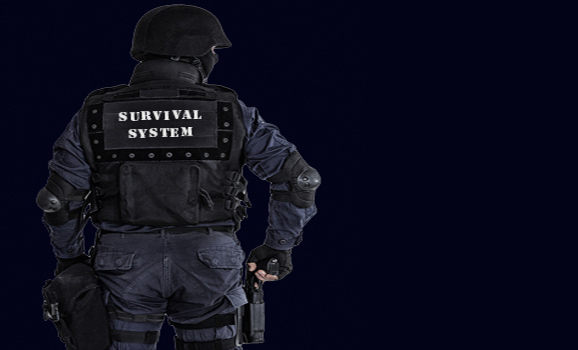
The Survival System
“The survival system is one of the most powerful and complex software applications of our mind. It has the task of protecting us from every possible physical and emotional risk and damage. Its actions are considered priority in the behavioral system since our life may depend on it. How does it work? It is database driven and uses a pre-compiled list of threats to spot and prevent danger.”
“Let me expand on this: from the time that we are in our mother’s tummy, our survival system collects a list of items that are considered dangerous. These may be all sorts of things like thoughts, feelings, emotions, people, animals, objects, sites, or some combination of those. Everything that may represent a threat is listed in it. I call this list the ‘database of the unsafe.’ This list is being constantly compared (24/7) with all of the data that we receive from our senses and our thoughts and covers every physical and emotional aspect of our daily life. If a match is identified, our survival system will believe that we are in danger and initiate a survival protocol.”
“Imagine seeing a tiger approaching. Your survival system will immediately associate the beast with danger and will start providing you a series of instinctive reactions to promote your safety.”
“Let’s carry on with our explanation. When the mind receives the warning of a possible threat, it will instruct the brain to evaluate the danger, and if it’s identified as a real threat, it initiates a ‘fight or flight’ strategy. This needs to be fast, and it’s done with top priority over all the other behaviors since it may save your life. Therefore, as soon as the defense protocol kicks in, the brain releases cortisol which is the fight-or-flight hormone, and also releases a warning to advise you of the danger. According to the level of hazard, this warning will create in you either a feeling of danger, anxiety, fear, or panic. In the rare case that we are confronted by real danger, this is lifesaving. If, instead, it is constantly triggered by false threats obliging the brain to overwork and constantly release cortisol and warnings, it becomes crippling.”
“According to my research, depression is the consequence of an overworked brain due to an overloaded survival system constantly reacting to false threats. Imagine that your brain has a CPU like a computer, which, like your Mac, is limited in its processing capability. Our brain is powerful and certainly oversized for our daily tasks, but imagine the overwork that it has to do if it’s forced to cipher through thousands of survival warnings on top off its current daily load. Like a computer that is processing too much data, the brain would have to slow down or crash. In order to avoid this, it’s obliged to make a choice between the survival requests and the daily tasks. Naturally, it prioritizes the first since survival is paramount to our existence, and it delays all the rest. This will reduce the processing time devoted to all the daily current activities to the extent that you will feel overwhelmed, confused, tired, compelled to procrastinate everything that is not essential, or, worse, it will make you depressed.”
“But what are these false threats? These are items in the ‘database of the unsafe’ erroneously listed as danger—typically the results of unconscious decisions made at a young age when we didn’t have the required experience or tools to properly assess our experiences. Or they may be correct assessments of threats that are now obsolete such as threats that were only dangerous in the first part of our life. I’ll give you a couple of examples of false threats: You are a young child and your mother constantly warns you to be careful around people because they can be dangerous. You may falsely associate people as threats, and every time that you are around people you will feel unsafe. Or you felt very hurt by your dad’s rejection and you may associate rejection as threat and therefore constantly fear rejection.” – The Mind Shaman